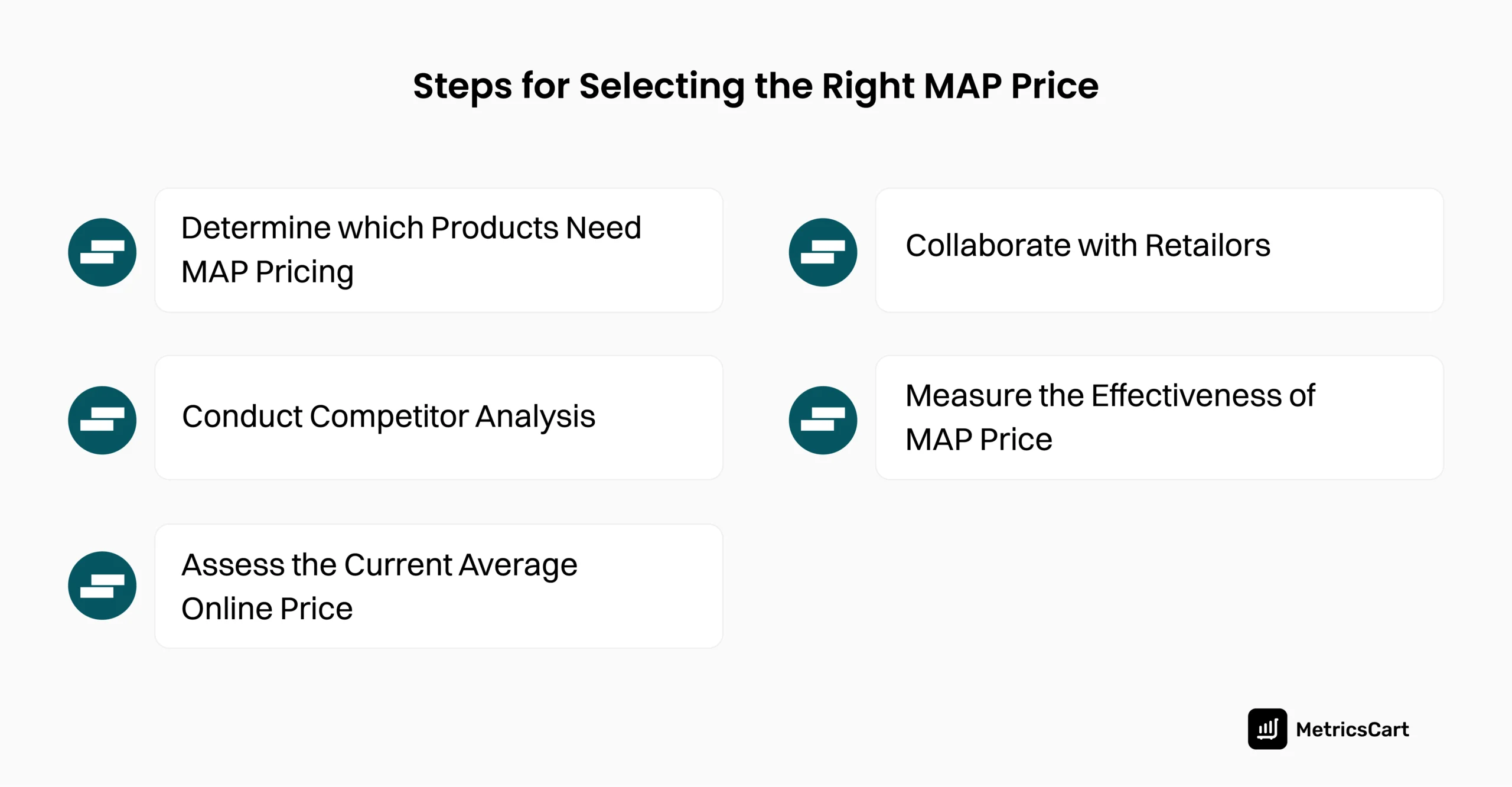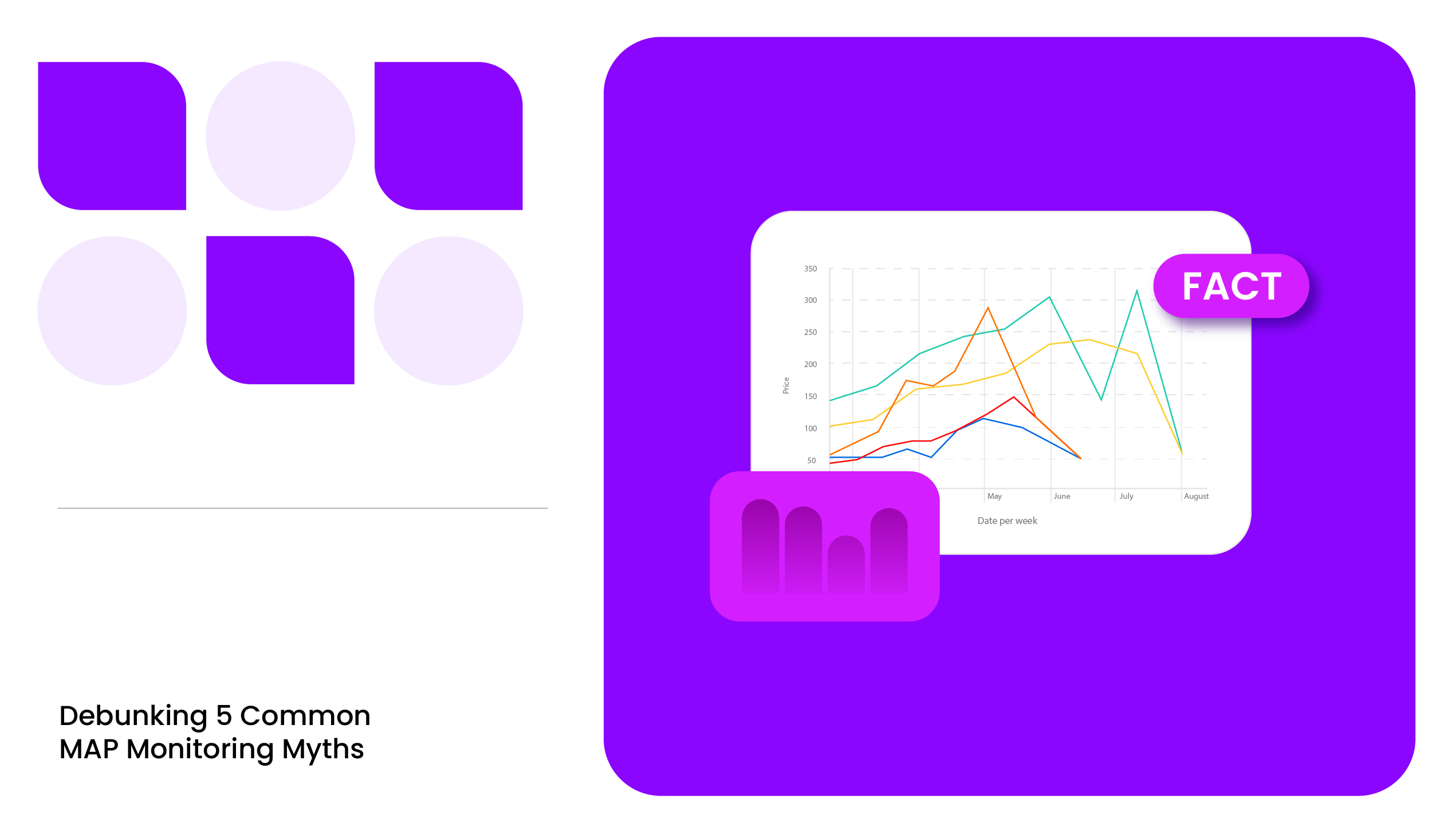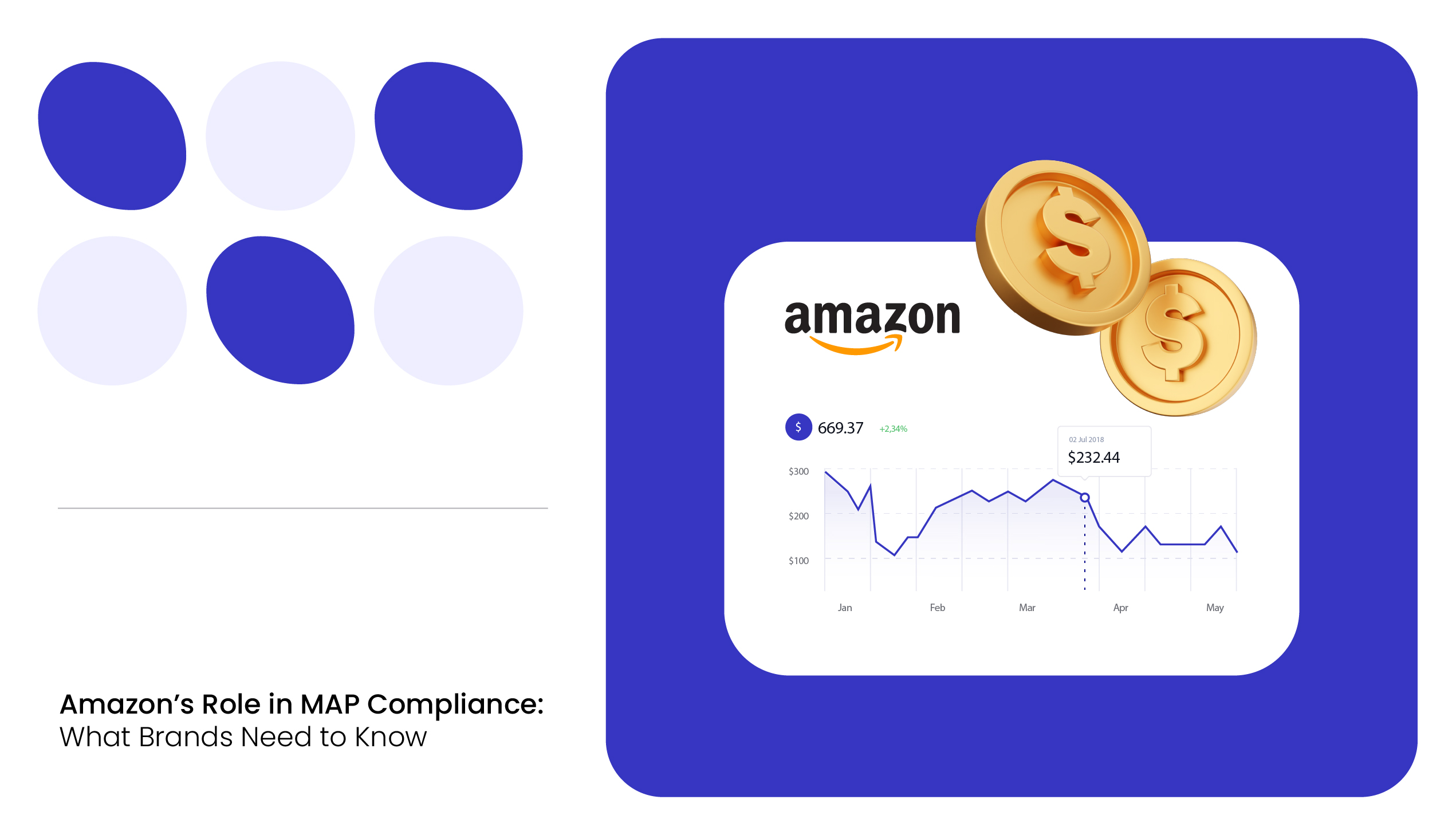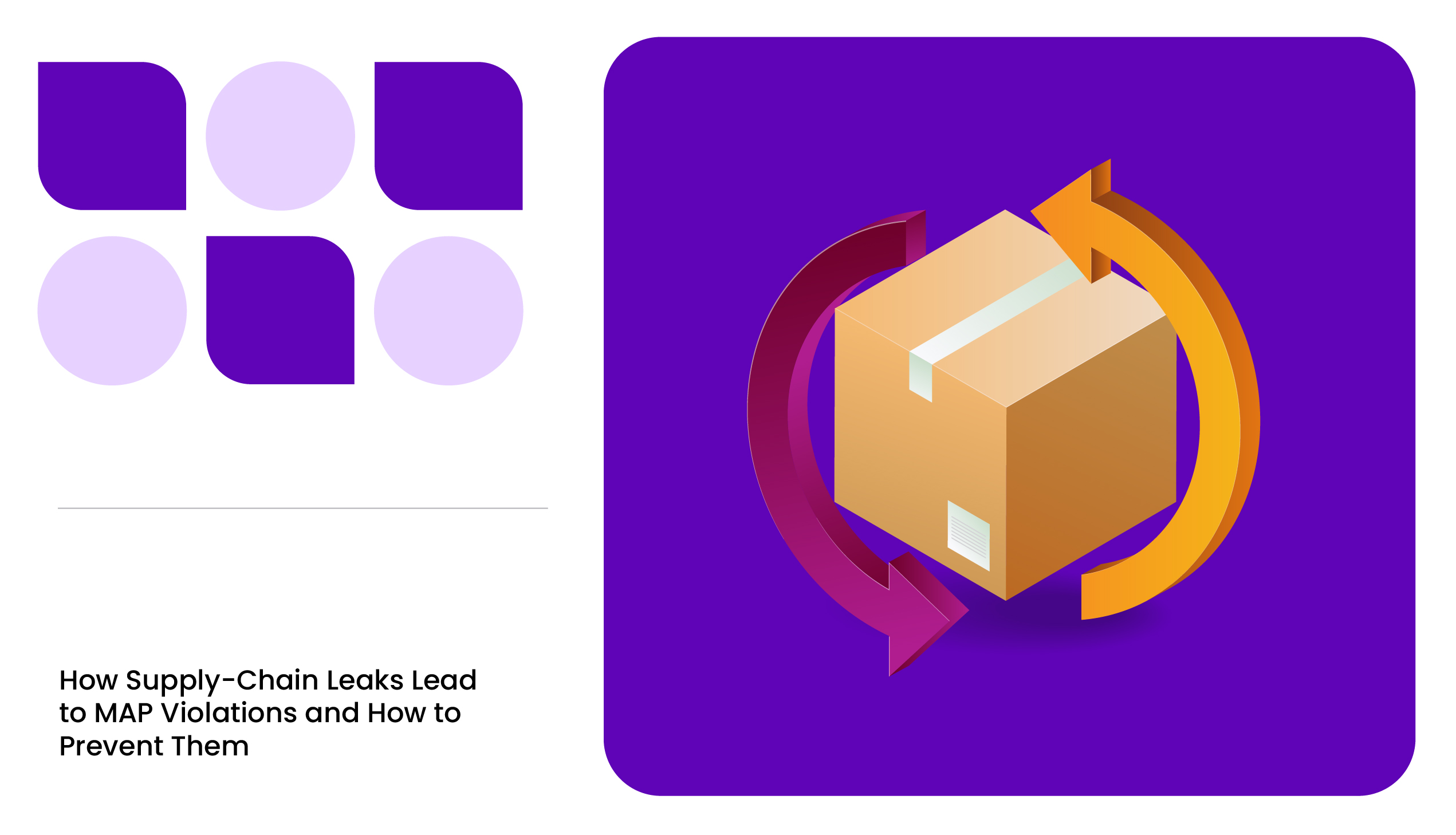Are you tired of watching your brand’s value get slashed in price wars? Ever wonder why some brands dominate while others fade away in a sea of discounts and markdowns? Spoiler: it’s how you set and enforce your MAP price.
The right Minimum Advertised Price (MAP) keeps your brand in control, protects your product’s value, and ensures fair competition.
MAP policies aren’t about controlling the prices at which retailers sell your products but about setting a floor for advertised prices. This ensures price consistency across channels and avoids race-to-the-bottom pricing.
But there’s a fine line to walk—set it too high, and customers walk away; set it too low, and your brand risks becoming another forgettable face in the crowd.
This guide will assist you in choosing the right MAP price that elevates your brand and shows how MAP monitoring software can help you grow your market share.

Determine which Products Need MAP Pricing
Not all products in a brand’s portfolio need Minimum Advertised Price (MAP) policies. You need to ensure that MAP pricing is set for products that can impact your brand’s reputation and profitability. Consistent pricing for these items helps maintain consumer trust and reinforces the perception of quality.
Apart from high-value items, certain products are vulnerable to aggressive discounting, especially in highly competitive online marketplaces. For example, over-the-counter medications or skin care products often experience price wars as retailers attempt to undercut each other. Implementing MAP policies for such items ensures fair competition.
Similarly, products in saturated markets, where numerous brands compete for consumer attention, benefit from MAP policies. For instance, coffee makers from brands like Keurig and Nespresso need MAP pricing to ensure that sellers don’t devalue the brand in a crowded space.
Finally, newly launched items, especially those with significant marketing investments, should be protected under MAP to maintain initial value and exclusivity.
Conduct Competitor Analysis
Understanding your competitors’ pricing strategies is crucial to setting your MAP price. For this, you need to assess where your brand fits within the market spectrum, i.e., premium, mid-tier, or budget. Then, you should identify and analyze how competitors price similar products across online and offline channels.
You can use a price monitoring tool to track competitor prices, promotional campaigns, and compliance with MAP policies. By leveraging competitor insights, you can set a MAP price that reflects your brand’s value proposition while staying competitive.

Assess the Current Average Online Price
While choosing the right MAP price for your product, it is critical to align it with market trends. This involves analyzing price fluctuations and understanding market dynamics to identify a competitive average price.
For this, you need to collect advertised prices from e-commerce platforms like Amazon, Walmart, etc., and track historical pricing data to identify trends, such as average price ranges and seasonal patterns. For example, air purifiers may see lower prices during spring sales but higher prices in winter when demand spikes.
This will help you avoid the situation where the MAP is set too high or too low, which could either deter customers or devalue the product.
READ MORE | Confused About Selecting a MAP Monitoring Tool? Check out the Best MAP Monitoring Software You Should Consider for E-Commerce
Collaborate with Retailors
Once you have selected the right MAP price, you need to share the policy with all authorized retailers and explain its importance for maintaining brand value. You need to clearly communicate the guidelines for implementing a MAP policy, including acceptable pricing practices and examples to minimize ambiguity.
Apart from outlining MAP expectations, you should also set clear guidelines for the consequences of MAP violation, such as warnings, reduced supply, or loss of authorized seller status. You must also emphasize the long-term benefits of MAP compliance, such as enhanced brand reputation and sustained profitability.
Measure the Effectiveness of MAP Price
After implementing a MAP policy, continuously monitor its impact on sales performance and market share. Utilize MAP monitoring software to assess whether the MAP price is achieving the desired outcomes. This will help you adjust your strategies based on data-driven insights to maintain competitiveness and uphold brand value.
If a particular MAP consistently invites retailer violations, it might be a sign that the MAP is too high. Adjust accordingly to prevent excessive discounting or unauthorized price drops.
READ MORE | Confused About Selecting MAP Monitoring Software for Your Business? Check out How to Choose MAP Monitoring Software for Your Business
Conclusion
Implementing an effective MAP pricing strategy is vital for protecting your brand’s integrity and ensuring consistent market positioning. By carefully following the steps mentioned above and adopting an advanced MAP monitoring tool, you can establish a MAP price that balances brand protection with competitive advantage.
Struggling to Track Map Violations Across Retailers?
FAQ
MAP stands for Minimum Advertised Price. It’s the lowest price at which a retailer is allowed to advertise a product, as set by the manufacturer, to maintain brand value and fair competition.
MAP monitoring for online sellers helps prevent price wars among retailers, protects profit margins, and maintains the perceived value of a brand’s products.
MAP enforcement involves clear communication of MAP policies, regular monitoring of advertised prices, and taking corrective actions against violations, such as issuing warnings or terminating agreements with non-compliant retailers.
Retailers can sell products below the MAP price in-store, but they cannot advertise those lower prices publicly. MAP policies govern advertised prices, not the actual selling price.
Without a MAP policy, brands may experience price erosion, diminished brand value, and unfair competition among retailers, leading to reduced profitability and market share.







